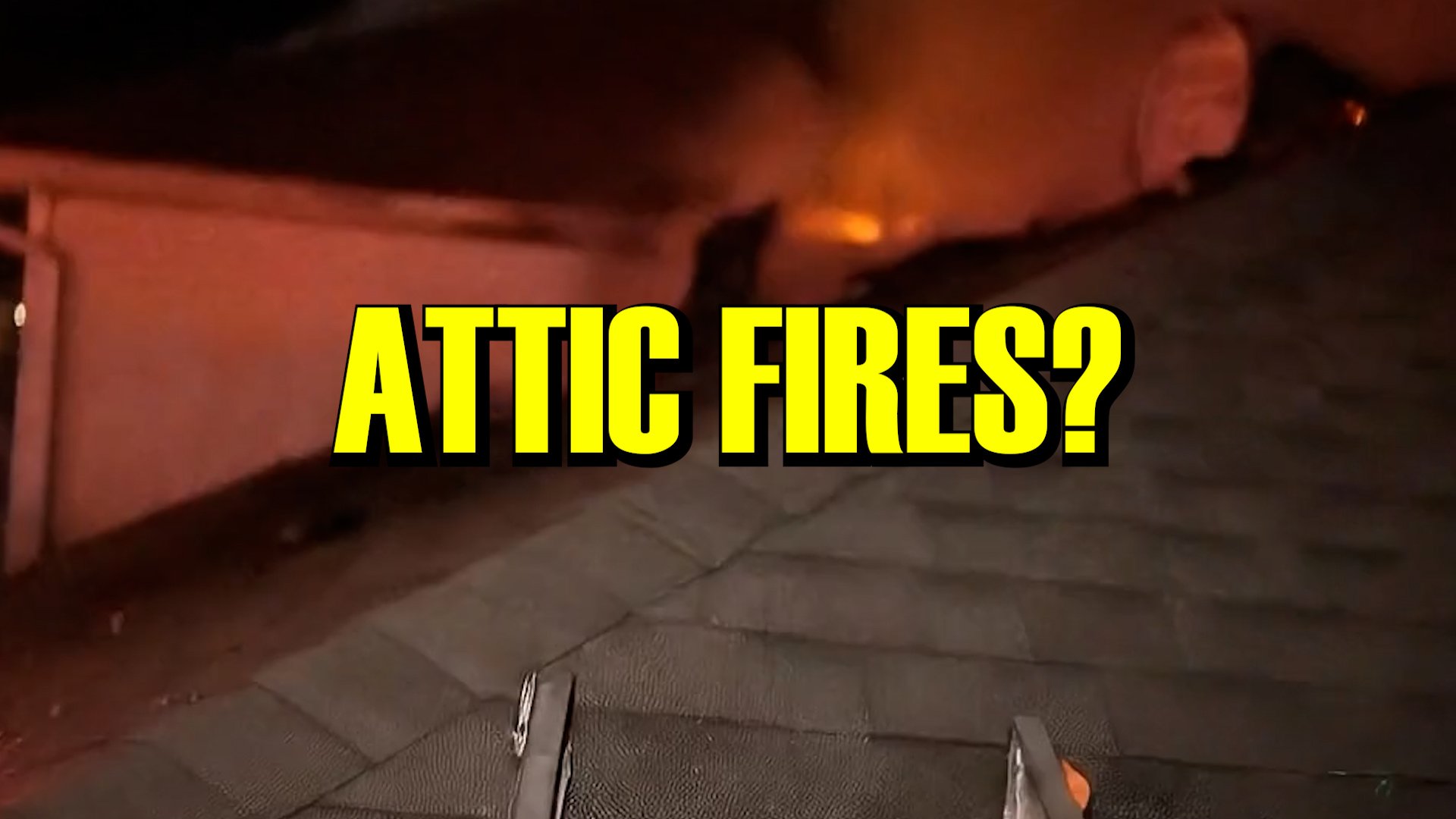Summary: When your crew faces an attic fire, are you prepared for what’s really up there? Before you cut the hole or stretch the line, ask the right questions. Where is the fire located? How do you know it’s not spreading unseen? What’s your plan for getting water into a sealed or hard-to-reach space? These are the kinds of challenges the TFT Transformer Nozzle System was built to handle — especially when traditional tools fall short.
One Attic Fire Tip for a Probie? Start With the Right Questions
Attic fires don’t play fair. They hide above ceilings, burn unseen, and take full advantage of time and construction features. For a probie stepping into this scenario, the tools matter — and so do the questions to ask beforehand.
How do you know where the fire really is?
Do you have eyes in the attic? If not, are you relying on thermal imaging alone — and do you trust it through tongue-and-groove, insulation, or plaster? Are you reading the smoke pushing from the eaves, gable vents, or rooflines? Attic fires don’t always announce themselves clearly. Are you pausing to read the structure before making entry?
Are you cooling before you open up?
If you’re planning to vent that roof, how much water have you flowed into the attic space first? Is anyone coordinating suppression and ventilation timing? Do you have a tool that can start water application before you’ve pulled a ceiling or cut a hole?
What’s your plan if you can’t make the push?
What happens when the fire is too far gone for a conventional interior attack? If your crew can’t reach the seat because of heat, collapse risk, or structural layout — what’s your backup? Have you trained with any kind of piercing or attic application nozzle that lets you get water into the void from a safe distance?
Can you make a hole and immediately flow water into it?
Have you tried a “cut-and-flow” tactic — making a small opening in the ceiling or roof and inserting a tool that gets water up and out in a mapped pattern? The TFT Transformer Nozzle System was designed for exactly that: quick deployment, long reach, and enough flow (up to 150 GPM) to make a difference, fast. Is that something your rig is carrying — or are you still improvising with old tools?
How are you protecting crews below?
If you're pulling ceilings, are you flowing water before the sheetrock drops? Have you talked about timing water application to reduce flashover risk for firefighters below? Are probies getting reps in ceiling-pull-and-cool coordination, or just watching from the back?
What’s the most common mistake you’ve seen at an attic fire?
Is it underestimating extension? Waiting too long to open up? Failing to get water into the space early? Every firehouse has its attic stories — but what are the teachable moments you’d pass on to the next probie heading into that first tricky void fire?
Attic fires test more than just your hose handling. They test your crew’s communication, timing, and tool choice. The Transformer Nozzle System is one option for departments that want a safer, faster way to get water into the places where conventional methods stall. But whatever tools you’re using — ask the right questions before you commit.
Want to see how your crew would handle it? Bring these questions into your next attic drill.



Comments